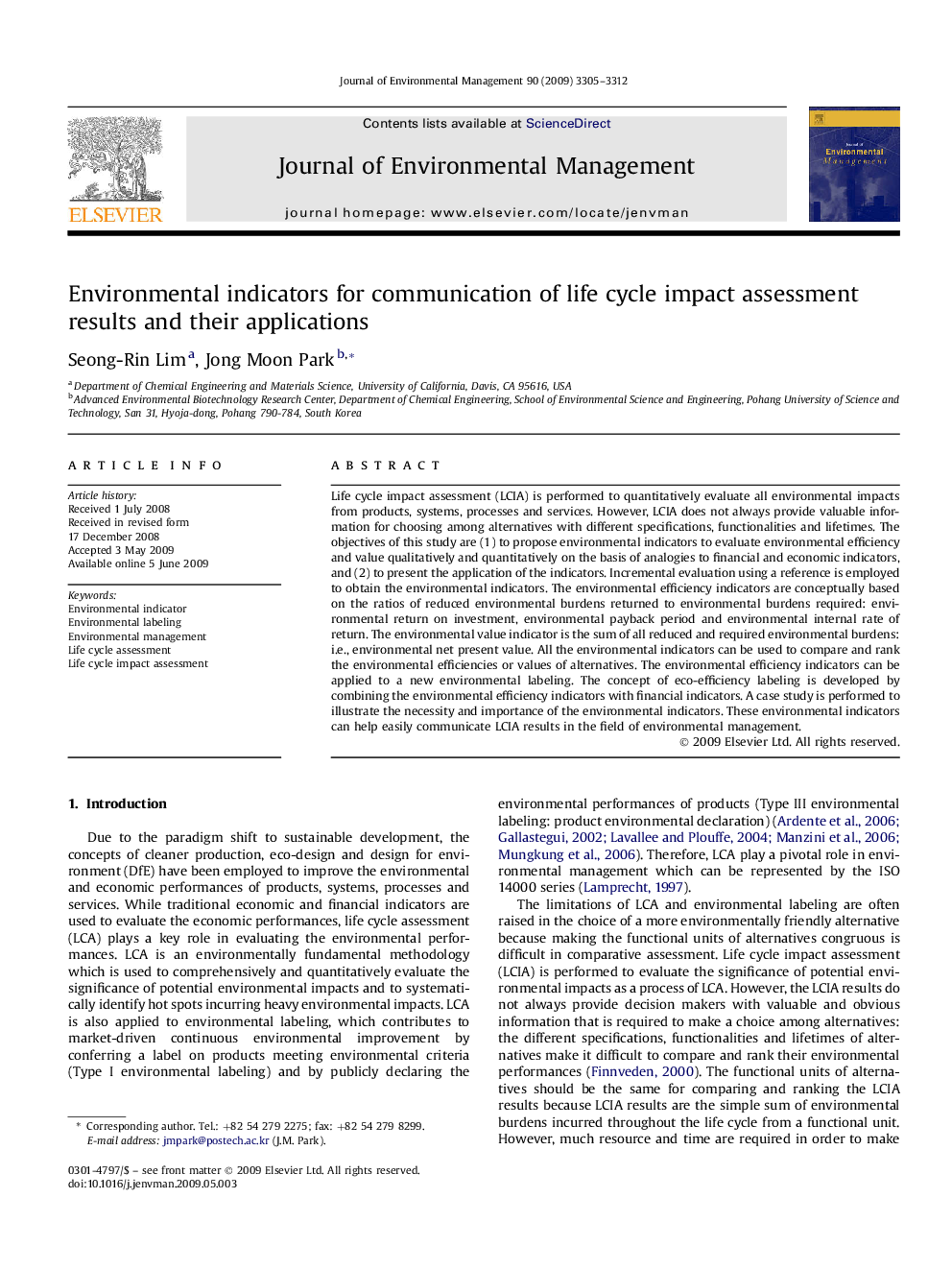| Article ID | Journal | Published Year | Pages | File Type |
|---|---|---|---|---|
| 1058024 | Journal of Environmental Management | 2009 | 8 Pages |
Life cycle impact assessment (LCIA) is performed to quantitatively evaluate all environmental impacts from products, systems, processes and services. However, LCIA does not always provide valuable information for choosing among alternatives with different specifications, functionalities and lifetimes. The objectives of this study are (1) to propose environmental indicators to evaluate environmental efficiency and value qualitatively and quantitatively on the basis of analogies to financial and economic indicators, and (2) to present the application of the indicators. Incremental evaluation using a reference is employed to obtain the environmental indicators. The environmental efficiency indicators are conceptually based on the ratios of reduced environmental burdens returned to environmental burdens required: environmental return on investment, environmental payback period and environmental internal rate of return. The environmental value indicator is the sum of all reduced and required environmental burdens: i.e., environmental net present value. All the environmental indicators can be used to compare and rank the environmental efficiencies or values of alternatives. The environmental efficiency indicators can be applied to a new environmental labeling. The concept of eco-efficiency labeling is developed by combining the environmental efficiency indicators with financial indicators. A case study is performed to illustrate the necessity and importance of the environmental indicators. These environmental indicators can help easily communicate LCIA results in the field of environmental management.
